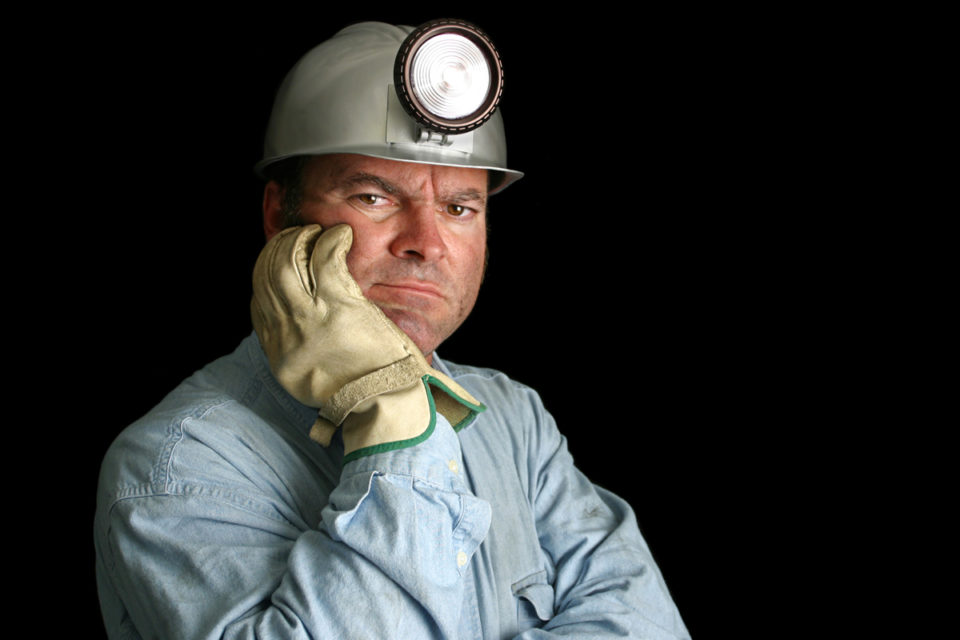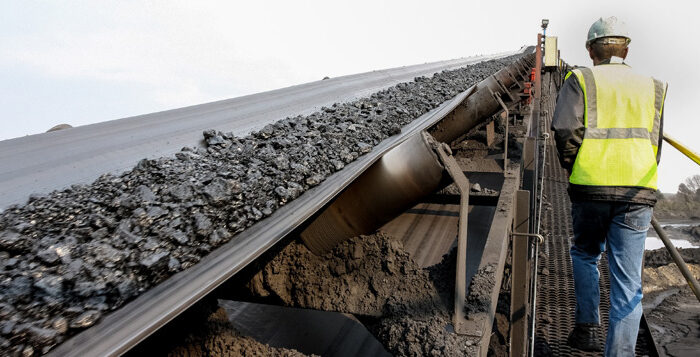Suicide in Coal Country: What One Rural Health Department Does for its Miners

By Amanda McIntosh, Southeast Utah Health District
September has been recognized as National Suicide Prevention and Awareness Month since 1975. It is observed during the first full week of September with events in communities that unite the fighters, the survivors and the supporters of ending suicide. These events look like walks/rallies, candlelight vigils, benefit concerts and social media posts.
The Centers for Disease Control reported that deaths from suicides and unintentional overdoses rose from 41,346 in 2000 to over 110,000 in 2017. Three years later in 2020, those numbers were exponentially higher. Suicide has consistently been ranked in the top 10 causes of death for the last two decades.
The opioid epidemic often walks hand in hand with suicide rates. September also celebrates National Recovery Month. In southeast Utah, both are extremely important.
Carbon, Emery and Grand Counties are frequently ranked first in the state for suicide deaths. Research shows there is not one causal factor for suicidal ideation, so the Southeast Utah Health Department (SEUHD), the HOPE Squad of Carbon, Emery, and Grand Counties and the Southeast Disease Prevention coalitions work hard to reach a wide range of community members: stay-at-home moms, farmers, the youth and the elderly, construction workers, teachers, men, women, LGBTQA+, college students and coal miners – who unfortunately lead the suicide deaths for those counties.
For Utahans aged 10-19, suicide is the first leading cause of death. Utah’s youth suicide rates are the fourth highest in the nation, behind Alaska, North Dakota and Montana. Overall, Utah ranks sixth in the nation for suicides and suicide is listed as the seventh leading cause of death, according to AFSP.org’s state facts 2020.
For opioid deaths, Utah ranks 21st in the nation; however, Carbon and Emery Counties lead Utah. A study done by the Harvard T. F. Chan School of Public Health in 2018, “Suicide and Firearm Injury in Utah,” showed that 18 percent of all people who died by suicide had opioids in their system; 15 percent of those who died by firearm suicide did and so did 48 percent of those who died by overdose suicide. Many overdose attempts are made outside of these data, according to the Chan School and dsamh.utah.gov.
It is not surprising to learn that the rise in overdose and suicide death rates over the past two decades paralleled the rise in opioid prescriptions; later, the rise in the use of heroin and illegally manufactured fentanyl. Dr. Mark Ilgen of the University of Michigan said: “To date, many system-level approaches to address overdose and suicide have addressed these as if they are unrelated outcomes … these adverse outcomes likely go together, and effective efforts to help those with pain will likely need to simultaneously consider both overdose and suicide risk.”
Too often, substance use has turned into a coping mechanism for emotional pain. Pain is not always visible, physical or perceivable to the outside world. Numbing the pain from the inside becomes an attractive alternative until the individuals are unable to escape the harmful effects of their drug use and other complications. This can also be a learned coping mechanism and an indicator of generational substance use and suicidal tendencies.
For anyone who has ever been in the dark depths of depression, it may be an obvious connection, and vice versa for anyone who has experienced the cycle of substance use disorder. When someone struggles with their mental health, turning to substances seems like the only option and for anyone struggling to find recovery, suicide seems almost inevitable. People look for a way to feel nothing at all as opposed to everything all at once; an escape, if only temporarily. This is especially true when a prescribed anti-depressant or anti-anxiety medication seems to take too long to regulate the brain’s natural dopamine, serotonin, oxytocin and endorphins, or the “quartet of chemicals responsible for your happiness” levels.
Some individuals are at a higher risk for suicidal tendencies and substance use disorders. Alcohol and drug abuse are among the leading risk factors for suicide. Other risk factors of suicidal ideation could include, but are not limited to, trauma, genetics, depression or other mental health disorders, loss of job or income, the loss of a loved one, etc. When hope is depleted, people are more likely to turn to substances to find joy and happiness. Loved ones who intentionally overdose as their choice modality to end their lives are not included in the statistics for suicide.
The good news is that suicide and substance use disorders are preventable and treatable. Having difficult and uncomfortable conversations about mental health and substance use disorders is vital. Any workplace barriers, insurance hurdles and/or old-school, macho or suck-it-up mentalities must be removed to better support employees and loved ones who are exhibiting signs of distress. More encouragement for help-seeking behaviors should not only be enforced but protected. Research has proven that talking about suicide or suicidal ideation does not plant the idea of a suicide attempt in someone’s thoughts. Asking someone directly about their suicidal ideation can lower their inhibitions to speaking about their depression aloud and can lead to potentially life-saving measures.
When hope is scarce, communities like the SEUHD will pull resources together to create change. One of those resources is the HOPE Squad of Carbon, Emery, and Grand Counties. This non-profit organization was started in 2013 by Debbie Marvidikis, SEUD’s health promotions director. That community lost 23 lives to suicide in 2013. In the last nine years, Marvidikis and her team have created, hosted and sponsored many events in the community to bring in prevention programs such as QPR: Question, Persuade and Refer (a free, one-hour, evidence-based suicide prevention training taught nationwide) and brought awareness to suicide and mental health with events such as Spring For HOPE, an annual HOPE Festival and an annual HOPE Walk. In 2018, Marvidikis championed for her community by bravely asking the state legislature to allocate funding for a suicide prevention specialist and an opioid prevention specialist to reduce the number of people lost to suicide/overdoses each year. For the first time in the state’s history, the legislature obliged and these two pilot positions were the first in Utah.
In the uncertain era of the COVID-19 pandemic, mental health efforts began to receive the recognition and attention needed to educate the masses. A state-wide suicide prevention plan was proposed and approved for immediate implementation. Under the plan, grant money was awarded to areas needing funding for prevention efforts. The state’s suicide prevention funding is disbursed by population, not by need and therefore, Carbon, Emery, and Grand Counties (less than 40,000 total population) only receives 2 percent of the annual budget. It was imperative for the SEUHD to apply for one of the LiveOn Utah grants. They knew exactly where they wanted to focus their prevention efforts: coal miners.
Once the grant was awarded, they reached out to Jake Wilson at Skyline Coal Mine, operated by Canyon Fuel Company. Wilson granted permission to use a mine portal to take pictures.
Marvidikis’ son, Nathan Marvidikis, is a longwall supervisor and was excited to have his crewmate, Ron Black, be a part of the messaging to his fellow mining brothers. Janarie Cammans, a local photographer, mom, first-ever female fire captain, foster parent and volunteer EMT, agreed to do a pro bono photo session that elevated the personal and area-specific details desired.
Coal miners are at a significantly higher risk for suicide. The profession is physically demanding. Shift work can sometimes create unhealthy sleeping habits. Miners enter the mine when it is dark outside and go home when it is dark outside. Sunlight is necessary for the body to rejuvenate serotonin levels. Serotonin wards off seasonal affective disorder (also known as SAD, a type of depression). Coal miners are in the middle of the high-risk category for many other reasons: they’re mostly male, Caucasian and between the ages of 18-65. Also, Utah has a high rate of firearm ownership, and firearms are responsible for over 50 percent of all suicides.
The SEUHD doesn’t advocate for gun control, but rather for gun safety. They distribute gun locks and gun socks for free and prioritize distribution regularly to every coal mine. By highlighting a well-known mine in the area and miners with experience in mental health training, SEUHD hopes to approach targeted media that speak specifically to this demographic. They want to ultimately convey that suicide is real, preventable and that it happens way too often, especially among coal miners. It also demonstrates that anyone can prevent the tragedy of a suicide by simply checking in on a co-worker or loved one, that resources are available both locally and state-wide and that it is not a weakness to seek help.
Amanda McIntosh is a suicide prevention specialist with the Southeast Utah Health District in Price, UT.








